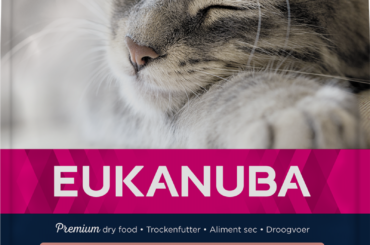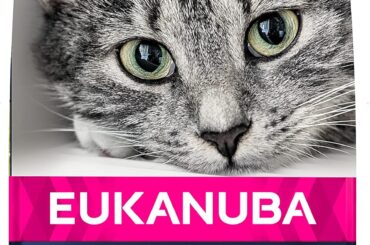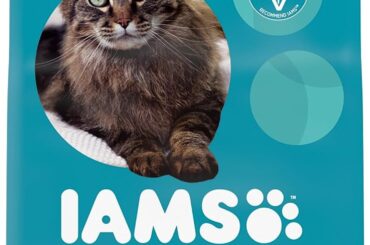Give your feline friend a tasty and healthy gift as a reward.
More information regarding our evaluation process is available here. Independently researching, assessing, and recommending the top options are our editors. We may receive commissions on purchases made after clicking on one of our chosen links.
Most cat owners want to show how much they love their cats by giving them treats and affection. There are many various types of cat treats available, and some are better for your cat than others. However, it can be more difficult than it appears to choose a nutritious reward because cats can be finicky eaters and some may have dietary restrictions.
Dr. Kerri Blackburn of River’s Edge Animal Hospital in Rock Hill, South Carolina, claims that cat nibbles, like human treats, are calorie- and sodium-rich to increase flavor and promote palatability (especially dental treats). She says, “this might be bothersome when a cat is trying to reduce weight or when a cat has health issues like renal or cardiac problems.” “There are many different components that can be used to make treats, which can be problematic for cats with allergies.”
Fortunately, you have a lot of options for healthy cat treats, so you can choose the best one for your cat regardless of any dietary restrictions it might have. By choosing a cat treat that your cat not only enjoys eating but also contains nutritional components, you may prevent providing your cat empty calories and start straight away contributing to your cat’s health rather than a problem.
The best healthy cat treats may be found below.
Best Overall: Wellness Kittles Crunchy Natural Grain Free Cat Treats
What We Like
- Natural ingredients
- Low calories
- High palatability
What We Don’t Like
- Chicken may need to be avoided by some cats
When you think of nutritious cat food, natural ingredients are typically what come to mind, and Wellness Kittles are packed with just that. Salmon is the main flavor and component in these crunchy snacks, but they also have peas, cranberries, blueberries, flaxseed, and other healthy nutrients. These additives could increase the amount of vitamins, antioxidants, omega fatty acids, and other beneficial nutrients in your cat’s diet. They only contain 1.1 calories per treat, therefore they won’t result in undesired weight gain. Wellness Kittles are grain-free as well, so cats that must avoid grains don’t have to be concerned.
Best Budget: Blue Buffalo Bursts With Savory Seafood Cat Treats
What We Like
- Meat is the first ingredient
- Less than $1/oz.
- No wheat
What We Don’t Like
- 12 ounces is the largest container available
- Slightly higher calories per treat than other similar options
As 12-ounce packets of these cat treats are available, spoiling your cat will cost less than $1 per ounce. Other wholesome snacks cost more per ounce and frequently only come in 2-ounce packs. The crunchy shell and creamy content of Blue Buffalo Bursts appeal to most cats, and cat owners enjoy them because they don’t contain wheat, artificial flavors, or preservatives. You can be confident your young carnivore is getting a balanced diet because meat is the first ingredient in both flavors of these inexpensive, nutrient-dense snacks.
Best Assorted: Blue Wilderness Soft-Moist Grain-Free Cat Treats Variety Pack
What We Like
- High protein
- No artificial preservatives
- Soft/moist texture
What We Don’t Like
- Treat shape may not appeal to some cats
- Treats may crumble in the bottom of the bag
The Blue Wilderness treats meet up to the high standards set by the Blue Buffalo Company’s line of grain-free pet foods. These soft, high-protein cat snacks are manufactured from natural ingredients and come in four flavors: chicken and turkey, chicken and duck, chicken and trout, and chicken and salmon. Cats habituated to consuming a range of canned cat foods on a regular basis will particularly like this selection. Because they are soft, these tiny squares of meaty delight—which have only 1.5 calories each—are ideal for cats of all ages who might have difficulty eating crunchy treats, including kittens, adults, and even the elderly.
Best Wet/Lickable: INABA Churu Grain-Free Tuna with Salmon Puree Lickable Cat Treat
What We Like
- Highly palatable
- High moisture content
- Contains responsibly-harvested seafood
What We Don’t Like
- Higher calories than other treats
- Packets are not resealable
Many veterinary clinics use this lickable cat treat to occupy patients during procedures or get them to eat, and cat owners have discovered they can use it at home as well. The business began selling fish in 1805, but INABA has been making pet items since 1958, so it has mastered this delicious treat made with pureed seafood. Because of their high moisture content, churu are often beneficial for cats who need to consume more water. To entice cats who may be reluctant to eat, they can also just be put on top of food. Additionally, they lack grains.
Best Dry: Greenies Feline Dental Cat Treats
What We Like
- VOHC approved
- Natural ingredients
- Low calories
What We Don’t Like
- Contains wheat
- Has less meat than other treat options
Some dry snacks are specifically designed to decrease tartar, even though dry treats are generally better for your cat’s mouth than soft treats. Feline Greenies Dental Treats have been authorized by the Veterinary Oral Health Council (VOHC) to decrease tartar and are also devoid of artificial flavors, preservatives, and fillers. Vitamins and minerals that are beneficial to your cat’s overall health are included in the treats’ all-natural ingredients. The fact that they are healthy, low in calories, and good for the teeth is an added benefit, according to cat owners, and their feline friends seem to appreciate them as well.
Best Grain-Free: American Journey Chicken Recipe Grain-Free Soft & Chewy Cat Treats
What We Like
- Soft texture
- High palatability rate
What We Don’t Like
- Treat size may vary so some cats may be finicky
- Won’t help with dental health
The majority of cats like this little cylinder, despite the fact that some cats might be picky about the texture, flavor, and even the shape of their food and treats. Many cat owners claim that their cats like American Journey’s soft and chewy cat treats. Giving your cat a treat with only two calories and meat as the main ingredient can make you feel wonderful. This option is suitable for cats that might not be able to manage wheat and maize because it is free of artificial colors and preservatives. Additionally, these treats won’t break the wallet even though you’re trying to give your cat a healthier option.
RELATED: The 9 Best Premium Dry Cat Foods of 2022, According to a Veterinarian
Best for Hairballs: Get Naked Digestive Health Soft Cat Treats
What We Like
- Probiotics and prebiotics
- Added fiber, flaxseed, and vegetable oil
What We Don’t Like
- Higher calories than many other treats of similar size
- Some cats don’t like the way they smell or taste
- Not as soft as some expect
Cats frequently groom themselves, but if they swallow too much hair, they can develop hairballs. Hairballs might not be a problem if they easily pass through your cat’s digestive tract, but they are concerning if they cause vomiting or become lodged. Digestive Nakedness Health treats with nutrients like flaxseed, fiber, prebiotics, and probiotics may help with hairball issues. The additional nutritious ingredients might not appeal to all picky cats, but if your hairball-prone cat is willing to try something new, these treats are a great choice.
Best Organic: Castor & Pollux Organix Organic Cat Treats
What We Like
- Low calories
- Wheat-free
- USDA Certified Organic
What We Don’t Like
- More expensive than other healthy treats
- Some cats may not like the flavor or texture
Castor & Pollux Organix cat snacks are free of artificial ingredients. This organic product is USDA-certified, plus each treat has just one calorie and is wheat-free. Many cat owners gush about how much their felines love these crunchy snacks. These treats are nearly twice as expensive per 2-ounce bag as other healthy cat treat options, but the extra money is well spent if you want to feed your kitties only organic items.
Final Verdict
The items on this list were chosen after investigation of their creators, components, and other elements. Cats thrive on diets based on meat and don’t need treats with artificial ingredients. Wellness Kittles are delicious meat-based treats that are economically priced and free of wheat and artificial chemicals (see at Amazon). They even contain additional healthful ingredients and are cat-friendly. Each treat has slightly more than one calorie.
The Characteristics of Good Cat Treats
Some cat treats occasionally adhere to the nutritional standards set forth by the AAFCO (Association of American Feed Control Officials) for cat meals, but treat manufacturers are not required to do so.
It might be challenging to determine what makes a nutritional reward for cats because cat treats are not held to the same standards as cat food. According to Dr. Blackburn, cat meals are prepared to meet dietary requirements. This suggests that even if there are some nutritious treat options available, the bulk of cat nibbles cannot take the role of a varied diet.
Wheat, artificial colors, preservatives, and high calorie ingredients should not be present in cat snacks. Any cat treat should contain meat as the first ingredient because cats are carnivores and benefit from a diet rich in meat, unless it is a lickable food that needs a greater water content.
According to Dr. Blackburn, it’s preferable to stay as true as you can to the typical flavor profile of your cat. Find a reward that contains the same ingredients as the food you regularly feed your cat. This means that if you avoid feeding grains or poultry, you need also make sure that none of these elements are present in your business operations. If your diet consists primarily of fish, pick a reward that is fish-based. This will make it more likely that your cat will like the treats and less likely that they will make him feel sick.
Calories
Dr. Blackburn advises keeping an eye on a treat’s calorie content to make sure you aren’t overindulging. However, doing so can quickly result in calorie accumulation and undesired weight gain in your cat. Many treat packs encourage you to offer your cat multiple treats each day. Low-calorie treats with only one or two calories will help prevent weight gain even though snacks should only make up 10% or less of your cat’s diet.
Texture
Some cats like lickable or soft nibbles, while others appreciate crunchy treats. The design of the goodies may also have a significant impact on your cat’s appetite. If your cat is fussy but easily eats its own food, think about using the usual food as treats.
Treatments with specific textures might also help prevent gum diseases like gingivitis. Dr. Blackburn advocates adopting therapies that minimize plaque and support excellent oral health because dental disease is common in cats over the age of one. These benefits are absent from treats that are soft and lickable.
FAQ
Are frozen cat treats nutritious?
Dr. Blackburn asserts that “raw commodities, even when pressed or dried, have the potential to have a substantial bacterial load that might result in bowel diseases.” The finest is prepared. Although freeze-dried sweets might not contain any additional ingredients, the risk of bacterial contamination exists. For this reason, some cat owners accept the bacterial risks if their cat has a restricted diet.
What sort of cat snacks are lickable?
Some lickable cat treats are loaded with calories and artificial flavorings, colors, and preservatives. Instead of artificial chemicals, look for natural ingredients like water or broth, added vitamins, or minerals. Reduce the amount of food your cat consumes every day. Lickable cat treats can be a terrific method to encourage an anorexic cat to eat and drink more water, but they can also add extra calories to the diet of healthy cats.
What quantity of treats would be harmful to my cat?
According to Dr. Blackburn, treats shouldn’t make up more than 10 percent of a cat’s daily calorie needs. To find out how many treats your cat can have, talk to your veterinarian about how many calories they should ingest daily. With a daily caloric intake of 200–220 calories for a 10-pound cat, this means that it can get up to 180–198 calories from food and 20–22 calories from treats.
Why Use Cat Products?
Adrienne Kruzer has been writing about pets and veterinary issues for more than ten years. She is a registered and licensed veterinary technician in three states. She is Fear Free Certified, specializes in canine nutrition, and enjoys learning, researching, and problem-solving in order to better help pet owners. She has a plethora of experience and information that will tremendously assist cat owners in choosing a nutritious treat thanks to her years of experience working in numerous veterinary hospitals, combined with her formal college degree and elective continuing education programs.
Dr. Kerri Blackburn has concentrated on general wellness care, ultrasonography, internal medicine, nutrition, surgery, and oncology since earning her veterinary degree in 2007. Dr. Blackburn is currently the medical director at Rivers Edge Animal Hospital in Rock Hill, South Carolina. Prior to this, she finished an internship at Affiliated Veterinary Specialists in Florida, and since then, she has sought expertise in advanced medicine, endoscopy, and ultrasound through a range of continuing education programs. She also takes part in the AVMA, NCVMA, SCVMA, and World Vets networks of veterinarians who are prepared for emergencies in South and North Carolina. Dr. Blackburn loves working with families to find and treat problems in their beloved dogs and keep their furry family members healthy. She understands the difficulties that veterinary medicine brings.














